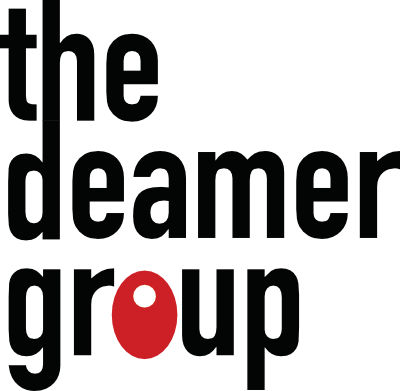Have you started thinking about your hiring strategy for next year? Now’s the time to consider how your plans measure up to the top recruiting challenges, as well as exciting trends that HR faces in the short-term and long-term.
The Recruiting Outlook for 2020
U.S. workers have been celebrating the steady decline in unemployment over the years to where it now hovers at a record low of 3.5%. Since there are fewer workers than there are job openings, job seekers have more control and thus bigger demands, which results in slower hiring for businesses.
But have you heard the silver lining?
According to interactive survey results from the American Staffing Association, almost half of employed adults in the U.S. (48%) report being likely to seek “a new job” in the next year. More than one-third (38%) of all respondents are planning to “switch careers, industries or roles.”
Of those respondents, millennials are the most likely to switch at 51%; a number made even more significant by the fact that they make up the largest part of the current workforce. Gen Z is second most likely with 36% looking to switch, while Gen X follows them with 34%. Baby Boomers largely seem to be relying on job security with only a 12% likelihood of switching careers.
Hiring won’t be without its challenges. But you’ve got positions to fill, and the good news is that the playing field for recruiting the talent you need may now be more open than you thought.
Expectations and technology are both evolving
At this time last year, a few big HR trends were evident: Candidates wanted to see improvements in employer response time. The demand for IT and tech jobs, as well as remote and flexible work, saw significant growth. The gig economy also continued to expand.
At the same time, employers were forced to reckon with a talent shortage, approaching their hiring timeframe with more flexibility, and candidates or new employees who signed contracts and then withdrew because of a better offer (around 22%).
Emphasis on technology use (like AI and automation) as well as on the candidate experience has left HR teams alternately excited and uncertain about how to optimize their hiring process.
Let’s break down the top challenges for 2020 based on your recruiting strategy, employer branding, and the hiring process itself.
Face challenges in your recruiting strategy by:
Searching and hiring for growth
It’s still a tight market, and it will be challenging to find a unicorn (the “perfect” fit) if you aren’t able to offer: a higher salary, career development opportunities, or in-demand benefits. In this case, look to a candidate’s potential—-their passion for the work and willingness to be trained in lieu of non-required hard skills will go a long way towards their engagement and retainability.
Putting soft skills at the forefront
A lot has been said about the skills gap, but what about soft skills? We’re in a time of great change when roles and technology evolve quickly. Recruiters must look for traits that signal adaptability, like curiosity, creativity, and standout communication, which are needed for the future of a workplace where AI and automation reshape traditional job descriptions. Here are the most in-demand soft skills, and a variety of ways to assess them.
Face challenges with your employer branding by:
Maintaining a positive online presence
Prospective applicants want to know if they are compatible with your company culture and get a taste of the employee experience, which is why it’s so important to have authentic and engaging messaging that both targets your candidate profile but is diversified enough so as not to pigeonhole your potential talent pool. More than 90% of candidates learn about the company online before applying for a job, but only 34% will submit an application if they find the company has bad ratings.
Holland McCue, Head of Global Employer Branding at Delta Air Lines, for example, emphasizes building marketing strategies around the three C’s: Candidate + Channel + Content. The digital dimension of recruiting, including content marketing and social media trends will also evolve in 2020.
Approaching diversity in more than just name
Diversity and Inclusion (D&I) has a crucial impact on employee engagement and retention. There have been encouraging strides made—-more employers are taking action to promote D&I initiatives in the workplace with 82% say it helps them to attract and retain talent—-but there is still a lot more work to be done.
Many companies, even tech giants who have publicly committed to improving diversity, have not made as much progress as they planned. One way to improve D&I at your company is to widen your view of it by expanding recruiting efforts to under-tapped communities still hungry for employment, like veterans and ex-offenders.
Be willing to embrace flexibility
Flexible work benefits are the future, if not the new normal, so put your offer front and center wherever you advertise open positions. A 2019 International Workplace Group survey found that 80% of people would accept a job offer that came with flexibility over one that did not; meanwhile, 85% of businesses find that flexibility increases in-office productivity. Win-win!
Being flexible with how you recruit
Job boards cause frustration for employers and candidates alike, and for good reason. On the side of applicants, nothing is more teeth-gritting than a form that requires a resume to be both uploaded and manually typed into the application. Nowadays, there are so many other ways to recruit successfully and in line with your employer branding that give you a fuller picture of potential candidates and don’t rely on you waiting for them to come to you.
For one thing, you can tailor your social media recruiting to your target demographic (ex. SnapChat is popular with both Gen Z and millennials) and look to current employees for referrals—-widely considered to be an effective recruiting method and best return on your efforts. It’s also a great way to tap into and expand on the diversity of your current employees. Here’s how to get great referrals.
Face challenges with the hiring process by:
Streamlining your methods
Gen Z may seem like an ironic bunch: They are encouraging recruiters to text them, and yet they yearn for more face time. This is a great lesson in meeting your talent pool where they’re at—-you can greatly expedite communication by using alternative methods like text and video calls (to reduce the difficulties of first-impression interviews), which modern candidates prefer in large numbers.
Strive to make the hiring process short—-in a competitive market, a 5-interview process may mean your candidate goes elsewhere—-but once you hire, value your employees’ passion and don’t underestimate the human element of recruiting and onboarding for retention purposes.
Automating with empathy
Automation plays a huge role in modern HR by helping facilitate candidate screening, interview scheduling, and skills analysis. However, it’s crucial to communicate efficiently and transparently and review the Golden Rule in order to create the best possible candidate experience. Even automated communication can be personalized, human, and in line with your employer brand.
Don’t forget to measure the success of your approach; for example, with feedback surveys. 87% of candidates say a positive candidate experience can dispel doubts about the recruiting company, while 83% say that a negative experience will change their mind about a role or company. These findings led Deloitte researchers to make the astute observation that “Not every candidate will join your organization. But every candidate will have an opinion about whether your organization is worth joining.” Those opinions may shape your network of future talent!
Final thoughts on hiring in 2020
It’s okay to be anxious about the many changes in HR, including the correct balance of AI/automation and the human touch. These 8 trends show us that technology is meant to play a supporting role: It helps recruiters foster positive employer branding and create the fast and efficient hiring process that 21st-century candidates have grown to prefer.
At the same time, we see a return of focus on the candidate experience and to the human element of work that makes it worthwhile, by focusing on targeted and personalized recruiting, flexible work benefits, and soft skills. As far as that last one goes, one thing we can say for sure is that soft skills like empathy and communication can bring long-term benefits for both employees and hiring managers on the job.

